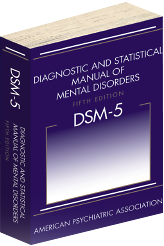DSM-5 Fine-Tunes Diagnostic Criteria for Psychosis, Bipolar Disorders
Abstract
Changes to DSM-5 criteria for psychosis and bipolar disorder are intended to make criteria more accurately reflect the way patients present. This is the second article in a series summarizing the major changes to diagnostic criteria in DSM-5 between now and its publication date in May.

An anxious distress “specifier” will be delineated in the DSM-5 criteria for bipolar disorder—as well as for depressive disorders—as a step toward a dimensional rating of a feature that significantly affects treatment outcome for a variety of disorders.
Additionally, criteria for bipolar disorder will now include an emphasis on changes in activity and energy—not just mood—to reflect findings from recent research. And the new manual eliminates the diagnosis known in DSM-IV as “bipiolar disorder 1—mixed type” and instead includes a “mixed state” specifier that can be used when episodes of mania include depressive symptoms and for depression that includes mania or hypomania.
Meanwhile, changes to criteria for schizophrenia include elimination of the subtypes delineated in previous editions and the creation of a catatonia specifier—as opposed to a separate subtype of psychosis—that can be used for depressive, bipolar, and psychotic disorders, or as a separate diagnosis in the context of a known medical condition. Additionally, two Criterion A symptoms will be required for any diagnosis of schizophrenia, at least one of which must be delusions, hallucinations, or disorganized thinking—the core “positive symptoms” that are necessary for a reliable diagnosis of schizophrenia.
But the most dramatic proposed changes to the chapter on psychotic disorders—the addition of dimensional ratings of severity and the inclusion of a new attenuated psychosis syndrome (APS)—were not approved for inclusion in the main text of diagnoses but placed in Section 3, where it is hoped they will attract research interest to guide future clinical utility.
Changes Called Mostly Conceptual
The DSM-5 chapters on psychotic and bipolar disorders are the second and third chapters in Section 2 of the new manual; they appear in succession as part of a new organizational schema designed to link disorders that share common genetic or neurobiological substrates (Psychiatric News, January 18). The multiple “axes” of previous editions have been eliminated, and a developmental approach guides the placement of disorders—those common to childhood appear at the beginning of Section 2, while those more typical of late life appear at the end.
In an interview with Psychiatric News, William Carpenter, M.D., chair of the Psychotic Disorders Work Group, said the major changes to the chapter on psychotic disorders are unlikely to affect case prevalence, but reflect conceptual changes that should make the criteria more accurately reflect individual patient presentation.
Perhaps most prominently, clinicians will note that the subtypes listed in DSM-IV—catatonic, disorganized, paranoid, residual, and undifferentiated—have been eliminated. “The main reason is that they have not proven useful clinically and are not a good heuristic for understanding psychosis,” Carpenter said.
He added, “It’s a mistake to think of catatonia as a subtype of schizophrenia, and the subtypes have tended to reinforce that mistake.” Instead, catatonia is listed as a specifier throughout DSM-5. A second important conceptual change from DSM-IV is that a patient can no longer meet Criterion A for psychosis with a single bizarre delusion, but must have a minimum of two symptoms—one of which must be one of the core psychotic symptoms of “delusions, hallucinations, or disorganized thinking.”
“It’s an important conceptual change because it’s a mistake to give that primacy to a single bizarre delusion, but we don’t think it will make a difference in caseness because it almost never happens in nature,” he said.
In a related change, Criterion A for delusional disorder no longer has the requirement that the delusions must be nonbizarre. However, specifiers for bizarre and nonbizarre delusions provide continuity with DSM-IV, Carpenter said.
A very important proposed change by the Psychotic Disorders Work Group was the inclusion of dimensional ratings that would have allowed clinicians to rate symptoms on a severity scale of 0 to 5. “It’s an idea based on a lot of research around ‘deconstructing’ schizophrenia, and nearly everyone agrees this is sensible,” Carpenter said.
However, the dimensional ratings were placed in Section 3 because of concerns that clinicians would find the ratings burdensome and inadequately tested for added value in routine clinical practice. But Carpenter said clinicians who want to use the dimensional ratings in Section 3 can do so, and he added that he hopes their inclusion there will introduce clinicians to the concept.
Finally, another controversial proposal didn’t make it into the main text and will also appear in Section 3—the diagnosis of attenuated psychosis syndrome, to describe individuals experiencing distress from attenuated symptoms that fall short of the clinical threshold for psychosis.
“That’s a good candidate for Section 3 because a lot of people think it needs more research,” Carpenter said. “And there are legitimate questions about whether the criteria can be reliably used by nonexperts. But clearly earlier identification of patients is the wave of the future and the inclusion of the criteria in Section 3 provides a path forward.” ■
Additional information, including video interviews with William Carpenter, M.D., on schizophrenia, and Ellen Frank, Ph.D., on mania, hypomania, and mixed episodes, can be accessed at http://www.psychiatry.org/dsm5.
DSM-5 may be preordered at http://www.appi.org/SearchCenter/Pages/default.aspx?k=2555. Also, attendees at the 2013 annual meeting in May will have an exclusive opportunity to purchase DSM-5 before it goes on sale to the public. The manual will be available in the American Psychiatric Publishing Bookstore in the Exhibit Hall in the Moscone Convention Center. Those who come to the bookstore on Saturday, May 18, from 4 p.m. to 5 p.m., can meet the DSM-5 Task Force chairs and receive a free gift with purchase. Whether buying online or in person, APA members are eligible for a discount.



